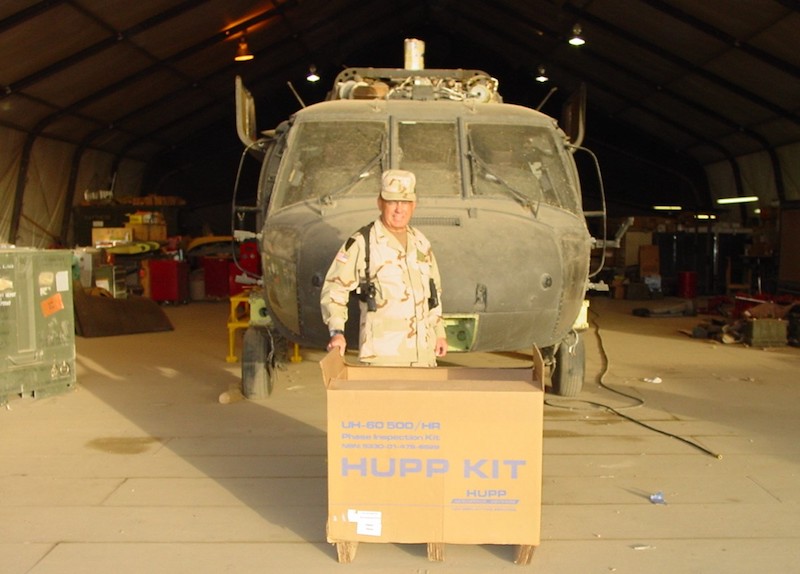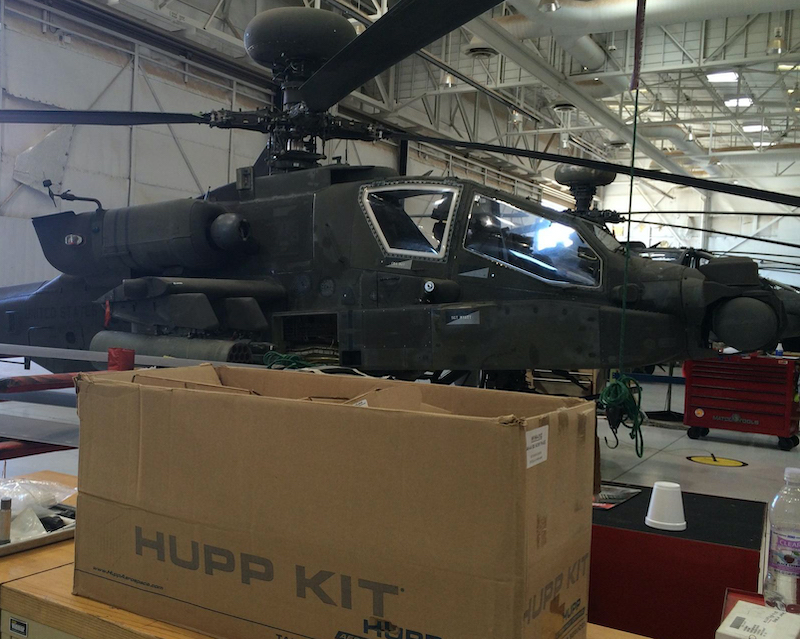By Joe Tito –
Hupp Aerospace provides kitting solutions and harness assemblies for their customers across many markets. They entered our radar screen through a discussion with Mark Leffler, their Director of Business Development, at a recent trade show. Mark lassoed Chris Sayler, Hupp’s Vice President and General Manager, on a subsequent conference call for a deeper understanding of the company and where they are headed.
We speak with a lot of companies who do kitting as a value-add for their harness and cable assembly customers. For Hupp Aerospace, it’s the other way around. Their harness business was spawned by their many successes providing kits for the military. But that’s not how they got started as a company.
At their heart, Hupp is a company centered around kitting, but it was originally formed in 1980 by Noel M. Hupp as an aerospace consulting firm. “They were consulting with folks on how to do business with the US Government,” Chris began, “how to use bid boards, how to fill out proposals — those very specific details” Ron Root, the current owner, joined the company in 1994 as part of the consulting team. In the course of his first three years, he was visiting repair depots and DLA (Defense Logistics Agency) locations. The folks he met with were constantly struggling to buy parts. “They would have to do a 500-hour phase maintenance on a Blackhawk helicopter, for example. There were hundreds of separate line items to procure and changeout the aircraft, and it was time consuming to get the right parts, every time. They were struggling to find them in the DLA inventory and unsure who they should even ask to quote the parts.”
On one such occasion, Ron was sitting with a client who slid a piece of paper in front him with all these intricate line items. It suddenly clicked with him as he thought, ‘I should buy all of these items from the qualified sources and assemble it into a kit.’ He took it a step further and arranged it by sections of the aircraft to make it extremely easy and efficient for a mechanic to complete the scheduled maintenance. The idea really took off, and Ron subsequently purchased the company in 1997.
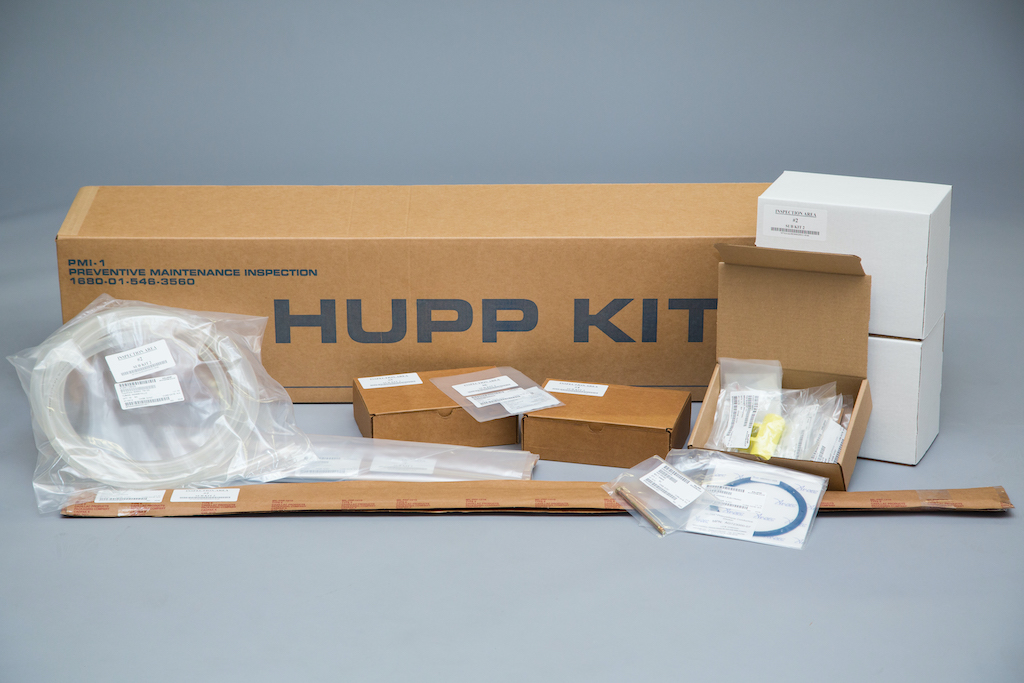
Over the next 20 years, Hupp Aerospace perfected the kit concept and expanded the aircraft, mostly rotorcraft, they covered. But in 2019, the government made some changes to the procurement process. They also began retiring or selling many of these rotor aircraft for quasi-governmental and various commercial uses, including, but not limited to: firefighting, utility line maintenance, border patrol work, etc.. These airframes still required the same maintenance intervals, but with less aircraft in use, and with fewer hours flown, it was far from an equitable exchange. “Ron started bringing in folks like Mark and I, along with some others, who had a lot of industry expertise in order to diversify the company, and expand into more diverse commercial opportunities. Etc…” Chris explained.
In 2020, they began looking at electrical options for kitting. “We’ve had a lot of success with people who build harnesses. We do all the wire cutting, laser marking, etc., and we source and purchase all the components form the correct qualified sources and marry it up into this beautiful kit we deliver,” he detailed. “The customer no longer has to do all that procurement and prep and value-add. It goes right into production on a harness board.”
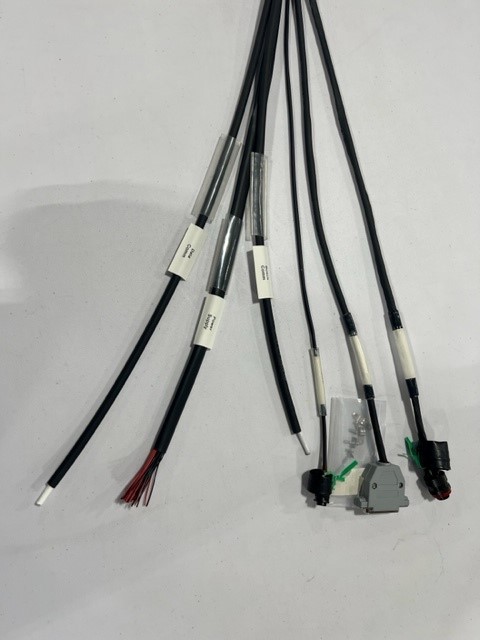
Once that started taking off, and with Chris’s heavy background in the wire harness world, he and his team realized they could train folks to build the harnesses and vertically integrate that piece into their structure as well. As they obtained a great deal of traction with harnesses, they began to see the need to control the complexity and markets they were serving. “While we still do work with Military aircraft, we have really diversified into auto racing and are really pushing hard in the boat manufacturing market with harnesses,” he said. “We are also talking to test houses who have thousands of control panels. So real diversification, but we are trying to keep it less complex.”
Thus, Hupp has defined three major lanes of operation; Maintenance Kits, Electrical Interconnect, and Distribution. The first is the original phase maintenance kits (and new kit development). The second lane is electrical products which is electrical kits, value-add and wire harness assemblies. The third lane Chris and his team are developing is that of a distributor. “Because our bigger programs have us at a level where we can buy direct from manufacturers, it puts us in a position to become a distributor. So now a lot of folks can benefit from that buying power and buy their bulk material from us,” he explained. It’s an aggressive strategy, but part of our five-year plan.
The conversation turned to ways Hupp funnels in new business. They list with ILS, PartsBase and other online platforms designed to help buyers connect with components in commercial, business, military and general aviation. If someone goes in one of those spaces looking for a specific part, we know they will be looking for others, or may even be a great prospect for kits. At this point, our salespeople reach out to these potential customers and start the conversation.
Hupp Aerospace also attends trade shows. “We’re not big on exhibiting. We’ve had much better luck attending,” Chris explained. “As an example, we did the NBAA (National Business Aviation Association) this past October in Orlando. Mark had about 30 meetings scheduled at the show, in addition to creating opportunities from cold conversations at the show.”
Another source of new business is coming from Hupp’s vendors. “Our big wire and cable distributors, along with some other folks we’ve been buying a lot of material from, are funneling harness business to us,” Chris explained. The website also generates new business, and they are about to undergo an overhaul there to better reflect the harness building capabilities.
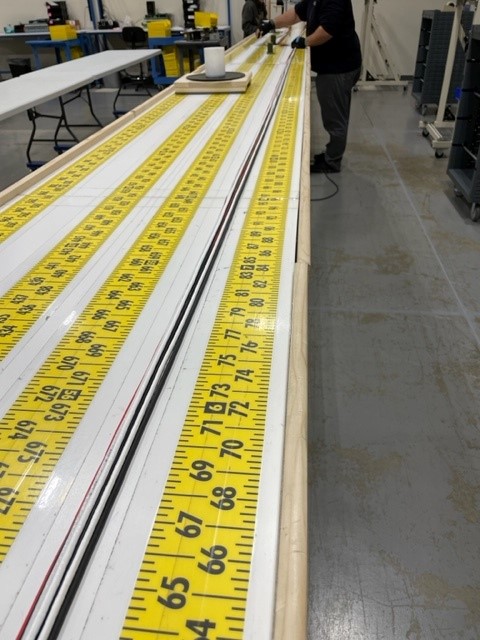
Hupp has also gotten a fair amount of traction with email blasts. “Our biggest struggle is timing them with the supply chain and making sure we actually have the material. As soon as those emails hit, we’re going to get calls, so we have to make sure we can actually deliver on what we’re telling people.”
By far, the biggest marketing push is with Mark traveling almost every week. He sees eight to ten existing and prospective customers making sure they understand Hupp’s full range of capabilities. “The phrase we like to use is ”tailored kitting,” Chris said. “Anything can be a kit if you want it to be.” Marks job, and one Chris stresses he is very good at, is showing folks examples in their everyday activities where a kit can be a solution to a bottleneck. He also demonstrates the resources it can open up to other things.
Mark’s extensive experience working in general aviation, coupled with his tenacity, gets him in the right doors. He chimed in to talk in more detail about some of the other applications for kitting and harness work he is uncovering. “I recently met with a specialty airframe manufacturer at their facility in Texas and discussed the benefits of establishing a Central Warehouse to control their inventory accuracy moving forward. Further to that, I discussed how kitting could help streamline their Manufacturing operation once they’d determined which parts/components and/or assemblies would best be suited for kits.
While attending the EAA Airventure Show in Oshkosh, Wisconsin, I met with an OEM that was having trouble with the manufacture of pigtail harnesses for their de-icing boot system.”
Mark also discussed a potential opportunity with an Avionics OEM supporting a potential opportunity to provide an Aftermarket avionics equipment kit (for what has historically been an OEM installation).
In addition, Mark is working with Flight Schools on maintenance kits for their fleet training aircraft.
“Chris and I come from the same thought process in that we are not sales guys per se. We’re not going to push for a quote or PO just to process the sale and move on. We want to be a partner who provides solutions, and we want to grow together with our customers.”
Hupp has 25,000 sq. ft. of manufacturing space in their New Haven, Indiana facility which is just outside of Fort Wayne. They also have about 11,000 sq. ft. of office and conference space. “We finished an expansion last January and the warehouse has 24 ft. ceilings so we can go up if we need more space,” Chris described.
They currently have 42 employees including seven folks working remote. “Ron is very old school, and so am I, but if you don’t offer the remote option, you’re going to limit the employee base you can draw from. It has worked out very well for us.”
The company was initially certified to AS9120 but completed their AS9001/ISO 9001 three years ago. “We just did our recertification and, quite honestly, we found it easier than the 9120, which had more stringent requirements, especially from an auditing standpoint,” Chris acknowledged.
Despite being a build-to-print shop, Hupp recommends alternative solutions for their customers all the time. “We have to, especially in this supply chain market.” The Hupp team knows the parts and have the contacts with their customers’ customer. They know where to turn to have the conversations with the right people and are well adept at supplying the test reports to get alternatives approved. “It’s expected at this point and I think if you’re not willing to do that…well, the customer is just going to find somebody who will.”
We rounded out the discussion by asking Chris what he feels makes Hupp an unmistakable supplier/partner in the eyes of their customers. “I think it’s our vast experience and deep technical knowledge across so many markets and how that gives us the ability to always have solutions available to meet or exceed their expectations. There is never a ‘not’ or ‘can’t’ and nobody waits for us.”
He continued saying unfortunate circumstances don’t get passed to the customer and when they come up against a wall, they get very creative. As an example, when their laser marking equipment went down, they were able to rely on a friendship they had cultivated with a near-by competitor. They seamlessly provided vital product to their customers who required laser marking. “We didn’t call them and say ‘hey, your orders are going to be late’. We were on time and our problems did not become their problems.”
Whether through knocking on new doors, or finding ways to better serve their current customers, Hupp seems well poised for growth. Chris, Mark and the rest of the team aren’t going to say no to any opportunities that present themselves. If you would like to explore ways Hupp Aerospace can help support any of your programs, contact Chris at [email protected] or Mark at [email protected]. Visit them at huppaerospace.com.
